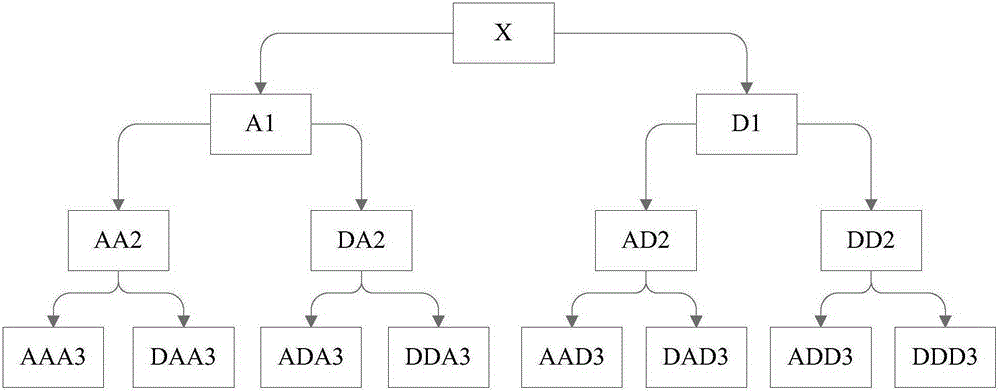Method for predicting wind speed and power of wind farm based on wavelet decomposition and support vector machine
A technology of support vector machine and wavelet decomposition, applied in forecasting, instrumentation, biological neural network model, etc., can solve the problems of reducing the accuracy of wind power forecasting, poor model coordination, complex and repeated forecasting steps, etc.
- Summary
- Abstract
- Description
- Claims
- Application Information
AI Technical Summary
Problems solved by technology
Method used
Image
Examples
Embodiment 1
[0059] Example 1: Take the short-term prediction of wind speed and power of Shandong Runhai wind farm based on wavelet decomposition and gray support vector machine as an example, such as figure 1 shown, including the following steps:
[0060] Step (1): Collect historical wind speed and power data of the entire wind farm for 150 consecutive days, with a sampling interval of 15 minutes, remove unreasonable data, and obtain the historical wind speed time series W 0 ={w(t-n),w(t-n+1),w(t-n+2),…,w(t)} and historical power time series P 0 ={p(t-n),p(t-n+1),p(t-n+2),...,p(t)}, n=14400; take the time series of the first 140 days as historical data, after taking 10-day time series as test data;
[0061] Step (2): Use multi-wavelet packet decomposition technology to decompose the historical wind speed time series respectively, and obtain the low-frequency component, mid-frequency component and high-frequency component of the historical wind speed time series;
[0062] The multi-wave...
PUM
 Login to View More
Login to View More Abstract
Description
Claims
Application Information
 Login to View More
Login to View More - R&D
- Intellectual Property
- Life Sciences
- Materials
- Tech Scout
- Unparalleled Data Quality
- Higher Quality Content
- 60% Fewer Hallucinations
Browse by: Latest US Patents, China's latest patents, Technical Efficacy Thesaurus, Application Domain, Technology Topic, Popular Technical Reports.
© 2025 PatSnap. All rights reserved.Legal|Privacy policy|Modern Slavery Act Transparency Statement|Sitemap|About US| Contact US: help@patsnap.com



